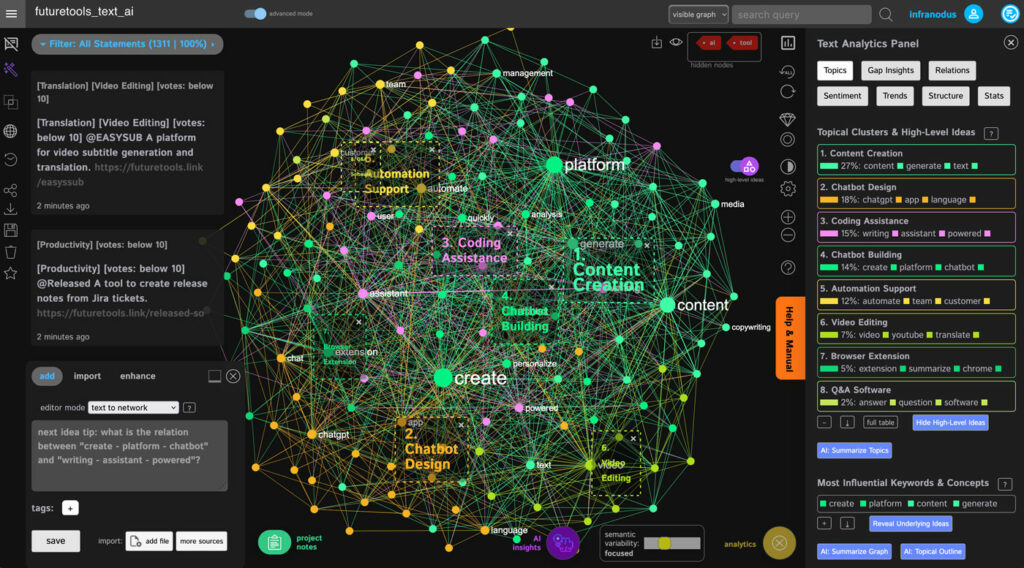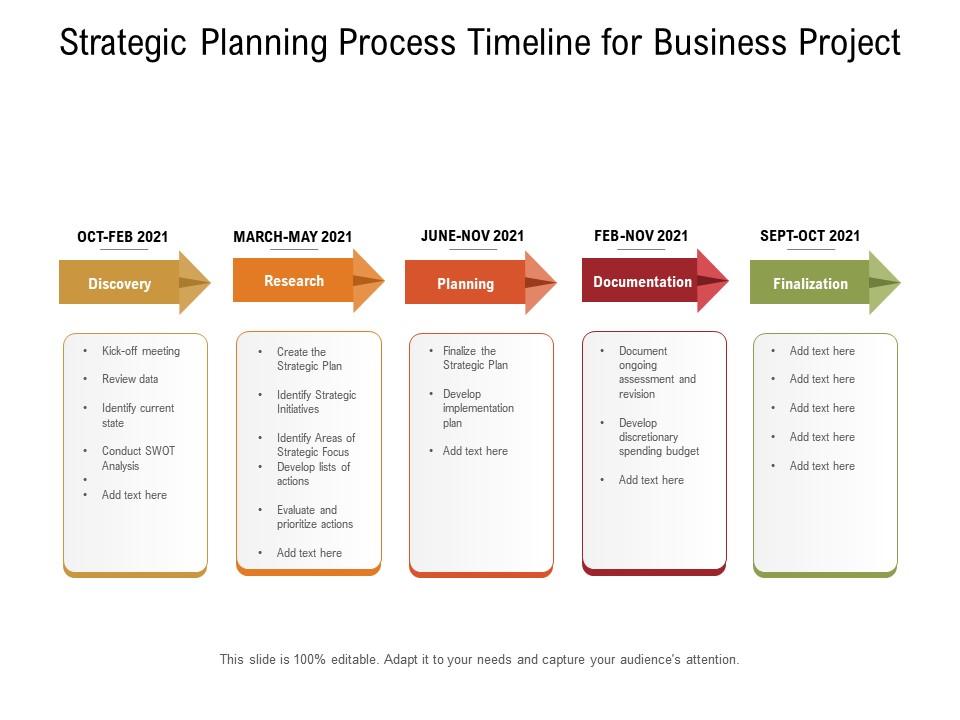Transforming Business Intelligence: How AI Bridges the Research-to-Insight Gap
Navigating the evolving landscape of business intelligence and AI research integration
In today's rapidly evolving business environment, I've witnessed a growing disconnect between cutting-edge AI research and practical business applications. As organizations strive to become data-driven, many struggle to translate complex AI capabilities into actionable business insights. In this guide, I'll explore how we can effectively bridge this gap, transforming theoretical AI advancements into tangible business value through strategic implementation, proper data architecture, and innovative visualization approaches.
The Current Landscape: Business Intelligence vs. AI Research
As I've observed the business intelligence landscape evolve over the past decade, the transformation from traditional BI to AI-driven insights has been remarkable. Yet, many organizations find themselves caught between two worlds – the established practices of business intelligence and the cutting-edge possibilities of AI research.

The evolution from static dashboards to dynamic, AI-powered business intelligence
According to a comprehensive survey conducted by MIT Technology Review involving 600 CTOs and CIOs, there exists a significant disconnect between organizations' data capabilities and their AI ambitions. I've seen this firsthand – companies investing heavily in AI research while lacking the fundamental data infrastructure to operationalize these insights.
The AI-Business Intelligence Gap
Survey results highlighting key challenges in integrating AI research with business operations:
The key challenges organizations face when attempting to operationalize AI research findings include:
- Fragmented data ecosystems that prevent holistic analysis
- Technical complexity that creates barriers for business users
- Difficulty translating theoretical AI capabilities into practical business applications
- Lack of alignment between data science teams and business objectives
- Insufficient governance structures for AI implementation
In my experience working with various organizations, I've noticed a fundamental difference between how businesses currently utilize data and how AI research suggests they should. Traditional BI approaches focus on descriptive analytics – what happened and why – while AI research points toward predictive and prescriptive capabilities that can transform business decision-making. Bridging this gap requires not just technological solutions but a comprehensive rethinking of how organizations approach data and insights.
Building the Foundation: Data Architecture for AI-Business Integration
I believe that creating a unified data ecosystem is the cornerstone of successful AI-business integration. As organizations increasingly become "company ai transformation roadmap" architects, the underlying data infrastructure must support both operational business applications and innovative AI initiatives.
Unified Data Ecosystem Architecture
A visual representation of how data flows between business applications and AI systems:
flowchart TD
subgraph "Business Applications"
BA[Business Users]
BI[BI Dashboards]
ERPS[ERP Systems]
CRM[CRM Systems]
end
subgraph "Data Foundation Layer"
DL[Data Lake]
DW[Data Warehouse]
MDM[Master Data Management]
DG[Data Governance]
end
subgraph "AI Capabilities"
ML[Machine Learning]
DL2[Deep Learning]
NLP[Natural Language Processing]
CV[Computer Vision]
end
BA --> DL
BI --> DW
ERPS --> MDM
CRM --> MDM
DL --> ML
DW --> ML
MDM --> DL2
DG --> NLP
DG --> CV
ML --> BI
DL2 --> BA
NLP --> CRM
CV --> ERPS
classDef business fill:#FFE2BF,stroke:#FF8000,color:#333
classDef data fill:#FFCB94,stroke:#FF8000,color:#333
classDef ai fill:#FF9A3C,stroke:#FF8000,color:#333
class BA,BI,ERPS,CRM business
class DL,DW,MDM,DG data
class ML,DL2,NLP,CV ai
The concept of organizations as "data manufacturers for AI" is transforming how we think about data architecture. In this paradigm, businesses don't just collect data for retrospective analysis – they systematically produce, refine, and contextualize data specifically to fuel AI systems. This shift has profound implications for data governance, quality control, and infrastructure design.
Essential components of a future-ready data infrastructure include:
Unified Data Platform
Integrates structured and unstructured data from all business sources into a cohesive ecosystem
Semantic Layer
Translates technical data structures into business-meaningful concepts and relationships
Real-time Processing Capabilities
Enables immediate analysis and action on incoming data streams
Governance Framework
Ensures data quality, compliance, and appropriate usage across AI applications
PageOn.ai's AI Blocks feature offers a powerful solution for structuring complex data relationships visually without requiring technical expertise. I've found this particularly valuable when working with cross-functional teams who need to collaborate on data architecture but don't share the same technical vocabulary.
PageOn.ai's AI Blocks interface for visual data architecture design
Industry research has identified several data constraints that limit AI potential, including data silos, quality issues, and lack of contextual metadata. Addressing these constraints requires a holistic approach that considers both technical architecture and organizational processes. By building a strong data foundation, organizations can more effectively bridge the gap between AI research and business insights.
The Human Element: Making AI Research Accessible to Business Users
In my years working at the intersection of AI and business, I've observed that the most significant barriers to AI adoption often aren't technical but human. Breaking down communication barriers between data scientists and business stakeholders is essential for translating AI research into business value.

Collaborative workshops bridge the communication gap between technical and business teams
Visualization plays a crucial role in translating complex AI concepts into actionable business insights. When business users can see patterns, relationships, and predictions represented visually, abstract AI capabilities become concrete business opportunities. This is where tools like PageOn.ai's Vibe Creation feature become invaluable.
The Knowledge Transfer Process
How visualization facilitates understanding between technical and business teams:
flowchart LR
A[AI Research] -->|Technical Concepts| B[Visualization Layer]
B -->|Simplified Visual Models| C[Business Understanding]
C -->|Business Requirements| D[Implementation Priorities]
D -->|Research Direction| A
style A fill:#FFB369,stroke:#FF8000,color:#333
style B fill:#FF9A3C,stroke:#FF8000,color:#333
style C fill:#FFCB94,stroke:#FF8000,color:#333
style D fill:#FFE2BF,stroke:#FF8000,color:#333
PageOn.ai's Vibe Creation enables non-technical users to articulate their data needs conversationally. I've seen this transform the relationship between business and technical teams by creating a shared language for discussing AI capabilities. Instead of business users struggling to understand technical jargon or data scientists missing business context, the tool creates a bridge through natural language interaction.
Case Study: Financial Services Firm
A leading financial services company successfully bridged the gap between their AI research team and business units by implementing a visual knowledge transfer approach:
- Created visual representations of customer segmentation models that business teams could easily understand
- Developed interactive dashboards allowing business users to explore AI predictions without technical knowledge
- Established weekly "translation sessions" where data scientists explained research findings using visual tools
- Resulted in 40% faster adoption of AI recommendations and 25% increase in measurable business impact
Training and upskilling strategies for business users are also essential components of successful AI-business integration. I recommend a multi-layered approach:
Business User Upskilling Framework
A structured approach to developing AI literacy across the organization:
By focusing on the human element of AI adoption, organizations can create an environment where business users actively engage with AI research rather than viewing it as an intimidating black box. This cultural shift is just as important as the technological infrastructure in bridging the gap between AI research and business insights.
From Insight to Action: Operationalizing AI Research
The journey from theoretical AI capabilities to practical business applications is where many organizations stumble. I've found that successful implementation requires a structured approach to operationalizing AI research.
The AI Operationalization Process
From research to business value:
flowchart TD
A[AI Research Findings] --> B[Business Context Integration]
B --> C[Prototype Development]
C --> D[Limited Deployment]
D --> E[Feedback Collection]
E --> F[Refinement]
F --> G[Full-Scale Implementation]
G --> H[Continuous Monitoring]
H --> I[Performance Evaluation]
I --> J[Further Research Direction]
J --> A
style A fill:#FFB369,stroke:#FF8000,color:#333
style B fill:#FFE2BF,stroke:#FF8000,color:#333
style C fill:#FFCB94,stroke:#FF8000,color:#333
style D fill:#FF9A3C,stroke:#FF8000,color:#333
style E fill:#FFB369,stroke:#FF8000,color:#333
style F fill:#FFE2BF,stroke:#FF8000,color:#333
style G fill:#FFCB94,stroke:#FF8000,color:#333
style H fill:#FF9A3C,stroke:#FF8000,color:#333
style I fill:#FFB369,stroke:#FF8000,color:#333
style J fill:#FFE2BF,stroke:#FF8000,color:#333
Pre-built, AI-infused insight applications are playing an increasingly important role in democratizing advanced analytics. These solutions package sophisticated AI capabilities into user-friendly interfaces that business users can leverage without deep technical expertise. As noted in industry research, these insight apps offer out-of-the-box analytical models, dashboards, and workflows for industry- and function-specific use cases.
PageOn.ai's Deep Search functionality offers a powerful way to integrate relevant business context into AI models. I've seen organizations use this feature to ensure that AI systems understand not just the data but the business environment in which that data exists. This contextual awareness is crucial for generating insights that are not just technically sound but business-relevant.

PageOn.ai's Deep Search interface integrating business context into AI models
Creating effective feedback loops between business outcomes and ongoing AI research is essential for continuous improvement. These loops ensure that AI development remains aligned with business needs and that insights generated actually drive value. The process typically involves:
- Defining clear business metrics that AI insights should impact
- Implementing tracking mechanisms to measure these impacts
- Regularly reviewing performance with both technical and business stakeholders
- Identifying areas where AI models could be refined or extended
- Prioritizing research directions based on business value potential
Measuring the ROI of AI implementation across different business functions presents unique challenges. I recommend a multi-dimensional approach that considers both quantitative and qualitative factors:
AI ROI by Business Function
Average return on investment across different departments:
The journey from insight to action is where the true value of AI research is realized. By establishing structured processes for operationalizing research findings and creating clear feedback mechanisms, organizations can ensure that their investments in AI translate into tangible business outcomes.
Strategic Implementation: The Roadmap to Becoming an AI-Driven Enterprise
Developing a comprehensive company ai transformation roadmap is essential for organizations seeking to bridge the gap between AI research and business insights. In my experience, successful transformation requires a clear vision, strategic milestones, and alignment with broader business objectives.
AI Transformation Roadmap
Key phases and milestones in becoming an AI-driven enterprise:
gantt
title AI Transformation Timeline
dateFormat YYYY-MM
axisFormat %Y-%m
section Foundation
Data Infrastructure Assessment :a1, 2024-01, 3m
Data Quality & Governance :a2, after a1, 4m
AI Literacy Training :a3, 2024-02, 4m
section Implementation
Pilot Projects :b1, after a1, 3m
Feedback & Refinement :b2, after b1, 2m
Scaled Deployment :b3, after b2, 4m
section Integration
Business Process Redesign :c1, after b2, 5m
Change Management :c2, after b3, 3m
Continuous Improvement :c3, after c2, ongoing
PageOn.ai's agentic capabilities provide a powerful tool for transforming business intent into visual AI roadmaps. I find this particularly valuable when working with executive teams who need to align on the strategic direction of AI initiatives. By visually representing the transformation journey, stakeholders can more easily identify dependencies, resource requirements, and potential bottlenecks.

Strategic AI transformation roadmap created with PageOn.ai's visualization tools
Resource allocation and investment prioritization are critical aspects of any AI transformation strategy. Based on my work with organizations across various industries, I recommend the following framework for maximizing business impact:
| Investment Category | Short-term (0-6 months) | Medium-term (6-18 months) | Long-term (18+ months) |
|---|---|---|---|
| Data Infrastructure | 30-40% | 20-30% | 10-20% |
| AI Capabilities | 20-25% | 30-40% | 30-40% |
| Talent & Training | 15-25% | 15-20% | 10-15% |
| Process Redesign | 5-10% | 15-25% | 20-30% |
| Innovation & Research | 10-15% | 10-15% | 15-25% |
Integrating AI transformation roadmaps with existing business processes requires careful planning and change management. I've found that organizations often underestimate the cultural and procedural changes necessary for successful AI adoption. The most effective approaches include:
- Identifying process owners who can champion AI integration
- Mapping current workflows and identifying points where AI can add value
- Developing transition plans that maintain business continuity
- Creating clear governance structures for AI-augmented processes
- Establishing metrics to track both process efficiency and business outcomes
Timeline considerations are also crucial when developing an AI transformation strategy. While organizations are often eager to realize quick wins, building a sustainable AI capability requires balancing short-term results with long-term infrastructure development. I recommend a phased approach that delivers incremental value while progressively building more sophisticated capabilities.
Industry-Specific Applications: Tailoring AI Research to Business Contexts
Different industries face unique challenges and opportunities when bridging the gap between AI research and business implementation. I've observed that successful organizations tailor their approach to reflect their specific business context rather than applying generic AI solutions.
AI Adoption Maturity by Industry
Current state of AI research-to-implementation across sectors:
The intelligent agents industry ecosystem is evolving rapidly, creating new opportunities for businesses to leverage AI research. PageOn.ai provides powerful visualization tools that help organizations map these complex ecosystems and identify strategic opportunities for implementation.
Intelligent Agent Ecosystem
Visualizing the relationships between different types of AI agents and business functions:
flowchart TD
subgraph "Business Functions"
MKT[Marketing]
OPS[Operations]
FIN[Finance]
HR[HR]
CS[Customer Service]
end
subgraph "Agent Types"
DA[Data Agents]
PA[Process Agents]
CA[Customer Agents]
AA[Analytics Agents]
SA[Strategy Agents]
end
MKT --- DA
MKT --- CA
MKT --- AA
OPS --- PA
OPS --- DA
FIN --- AA
FIN --- SA
HR --- PA
HR --- DA
CS --- CA
CS --- PA
style MKT fill:#FFE2BF,stroke:#FF8000,color:#333
style OPS fill:#FFE2BF,stroke:#FF8000,color:#333
style FIN fill:#FFE2BF,stroke:#FF8000,color:#333
style HR fill:#FFE2BF,stroke:#FF8000,color:#333
style CS fill:#FFE2BF,stroke:#FF8000,color:#333
style DA fill:#FFCB94,stroke:#FF8000,color:#333
style PA fill:#FFCB94,stroke:#FF8000,color:#333
style CA fill:#FFCB94,stroke:#FF8000,color:#333
style AA fill:#FFCB94,stroke:#FF8000,color:#333
style SA fill:#FFCB94,stroke:#FF8000,color:#333
Case Study: Retail Industry
A major retail chain successfully bridged the AI research-to-implementation gap by:
- Creating a cross-functional team of data scientists and merchandising experts
- Developing visual representations of customer journey analytics that store managers could easily understand
- Implementing a phased approach that delivered incremental value while building more sophisticated capabilities
- Using PageOn.ai to create clear visualizations of complex customer segmentation models
- Results: 18% increase in targeted promotion effectiveness and 12% reduction in inventory costs
Different business functions also require specialized approaches to AI implementation. Based on my experience working across organizations, I've observed these function-specific considerations:
Marketing
Focus on customer behavior prediction, segmentation refinement, and campaign optimization through ai marketing investment strategies.
Operations
Emphasize process optimization, predictive maintenance, and supply chain visibility through real-time analytics.
Finance
Prioritize risk modeling, fraud detection, and automated reporting with clear explanation of AI-driven insights.
Customer Service
Focus on sentiment analysis, intelligent routing, and personalized service delivery through AI assistants for small business.
The key to successful industry-specific implementation lies in understanding the unique business context and adapting AI research accordingly. By visualizing complex relationships and tailoring approaches to specific business needs, organizations can more effectively bridge the gap between cutting-edge AI research and practical business applications.
The Future Landscape: Emerging Trends in AI-Business Integration
As I look to the future of AI-business integration, several emerging trends are reshaping how organizations bridge the gap between research and implementation. Understanding these developments is essential for staying ahead in an increasingly AI-driven business environment.

The future workplace with intelligent agents and human collaboration
The evolution of intelligent agents in business decision-making processes represents one of the most significant shifts in how AI research translates to business value. These agents are moving beyond simple automation to become active participants in complex business processes, capable of:
- Proactively identifying business opportunities based on data patterns
- Collaborating with human decision-makers by providing context-aware recommendations
- Learning from feedback to continuously improve their effectiveness
- Orchestrating workflows across multiple systems and departments
- Explaining their reasoning in business terms that stakeholders can understand
Small businesses are increasingly leveraging AI assistants for small business to compete with larger enterprises. These tools democratize access to sophisticated AI capabilities that were previously available only to organizations with substantial technical resources. I've seen small businesses use these assistants to:
Small Business AI Adoption
Primary use cases for AI assistants in small businesses:
The growing importance of explainable AI for business stakeholder adoption cannot be overstated. As AI systems become more deeply integrated into critical business processes, the ability to understand and trust their recommendations becomes essential. I've observed several approaches to addressing this challenge:
Explainable AI Framework
Components of business-friendly AI explanations:
flowchart TD
A[AI Decision] --> B[Business Context]
A --> C[Key Factors]
A --> D[Confidence Level]
A --> E[Alternative Options]
A --> F[Business Impact]
B --> G[Final Explanation]
C --> G
D --> G
E --> G
F --> G
G --> H[Business User Understanding]
style A fill:#FF8000,stroke:#FF8000,color:white
style B fill:#FF9A3C,stroke:#FF8000,color:#333
style C fill:#FF9A3C,stroke:#FF8000,color:#333
style D fill:#FF9A3C,stroke:#FF8000,color:#333
style E fill:#FF9A3C,stroke:#FF8000,color:#333
style F fill:#FF9A3C,stroke:#FF8000,color:#333
style G fill:#FFB369,stroke:#FF8000,color:#333
style H fill:#FFCB94,stroke:#FF8000,color:#333
Looking ahead, I predict several key developments in how the relationship between AI research and business insights will evolve:
- Embedded AI: AI capabilities will become seamlessly integrated into everyday business applications, removing the distinction between "AI tools" and regular software
- Collaborative Intelligence: The focus will shift from AI replacing humans to AI-human collaboration models that leverage the strengths of both
- Domain-Specific AI: General AI research will increasingly be tailored to specific industry contexts and business problems
- Democratized Development: Low-code and no-code platforms will enable business users to create their own AI solutions without deep technical expertise
- Continuous Learning Systems: AI implementations will evolve from static models to systems that continuously learn and adapt based on business outcomes
PageOn.ai's visual approach positions organizations well for these future developments by making complex AI concepts accessible to business users and facilitating collaboration between technical and non-technical stakeholders. The ability to visualize relationships, processes, and outcomes will become increasingly valuable as AI systems grow more sophisticated.
As ai marketing and other business applications of AI continue to evolve, organizations that effectively bridge the gap between research and implementation will gain significant competitive advantages. By staying attuned to emerging trends and investing in tools that facilitate understanding across technical and business domains, companies can position themselves at the forefront of the AI-driven business transformation.
Measuring Success: KPIs for Effective AI-Business Integration
Establishing the right metrics is crucial for evaluating the effectiveness of efforts to bridge AI research and business insights. In my experience, successful measurement frameworks balance technical excellence with practical business outcomes.
Balanced AI Measurement Framework
Key performance indicators across different dimensions:
When establishing metrics that matter for both technical and business stakeholders, I recommend focusing on these key areas:
Business Value Metrics
- Revenue impact
- Cost reduction
- Customer satisfaction
- Time-to-decision improvements
Technical Performance Metrics
- Model accuracy
- Processing efficiency
- System reliability
- Data quality scores
Adoption Metrics
- User engagement rates
- Feature utilization
- Training completion
- Feedback sentiment
Innovation Metrics
- New use cases identified
- Research-to-implementation time
- Cross-functional collaborations
- Patents and intellectual property
Balancing innovation with practical business outcomes is a constant challenge when implementing AI. I've found that organizations often swing too far in one direction – either focusing exclusively on cutting-edge research without clear business applications or limiting themselves to incremental improvements that don't leverage AI's transformative potential. The most successful approaches maintain tension between these extremes through:
- Portfolio management approaches that allocate resources across different time horizons
- Regular review processes that evaluate both technical excellence and business impact
- Cross-functional teams that include both research and business perspectives
- Staged implementation approaches that deliver incremental value while building toward larger transformations
Visualizing and communicating AI ROI to executive leadership is essential for sustained investment and support. PageOn.ai offers powerful tools for creating dashboards that effectively communicate complex AI concepts to business leaders. I recommend focusing on these key principles:

Executive dashboard visualizing AI ROI and business impact metrics
- Focus on outcomes rather than technical processes
- Connect AI initiatives directly to strategic business priorities
- Use visual representations that highlight trends and patterns
- Include both quantitative metrics and qualitative success stories
- Provide appropriate context and benchmarks for comparison
Long-term value creation through sustained AI-business alignment requires ongoing attention to measurement and refinement. By establishing clear metrics that matter to both technical and business stakeholders, organizations can ensure that their investments in AI research translate into meaningful business impact. The most successful companies view this not as a one-time implementation but as an ongoing journey of discovery and adaptation.
Transform Your Visual Expressions with PageOn.ai
Ready to bridge the gap between complex AI research and actionable business insights? PageOn.ai provides the tools you need to visualize relationships, communicate complex concepts, and drive meaningful business outcomes through clear visual expressions.
Conclusion: The Future of AI-Business Integration
Throughout this guide, I've explored the multifaceted challenge of bridging the gap between AI research and business insights. From building the right data architecture to fostering human understanding, from operationalizing insights to measuring success, effective integration requires a holistic approach that addresses both technical and organizational factors.
As we look to the future, the organizations that will thrive are those that view AI not as a separate technical function but as an integral part of their business strategy. By creating unified data ecosystems, fostering cross-functional collaboration, and implementing clear measurement frameworks, companies can ensure that cutting-edge AI research translates into tangible business value.
PageOn.ai's visual approach to information representation provides a powerful tool for this integration journey. By making complex concepts accessible, facilitating communication across domains, and enabling clear visualization of relationships and outcomes, PageOn.ai helps organizations bridge the gap between technical capabilities and business applications.
The path to becoming an AI-driven enterprise is not about implementing a specific technology or following a rigid methodology. Rather, it's about creating an organizational capability to continuously translate research into insights and insights into action. By focusing on this capability building, organizations can position themselves to leverage not just today's AI advancements but tomorrow's as well.
You Might Also Like
Mastering FOMO Psychology: Creating Irresistible Business Pitch Strategies | PageOn.ai
Learn how to leverage FOMO psychology in your business pitches to drive urgent action. Discover proven strategies for creating authentic scarcity, exclusivity, and urgency that converts.
From What to Why in Business Presentations: Purpose-Driven Storytelling Strategy
Transform your business presentations from data-heavy information delivery to purpose-driven storytelling that engages audiences and drives decisions with these expert strategies.
Multi-Format Conversion Tools: Transforming Modern Workflows for Digital Productivity
Discover how multi-format conversion tools are revolutionizing digital productivity across industries. Learn about essential features, integration strategies, and future trends in format conversion technology.
Building Competitive Advantage Through Effective Speaking | Business Communication Strategy
Discover how effective speaking creates measurable competitive advantage in business. Learn strategic communication frameworks, crisis response techniques, and visualization tools for organizational success.
